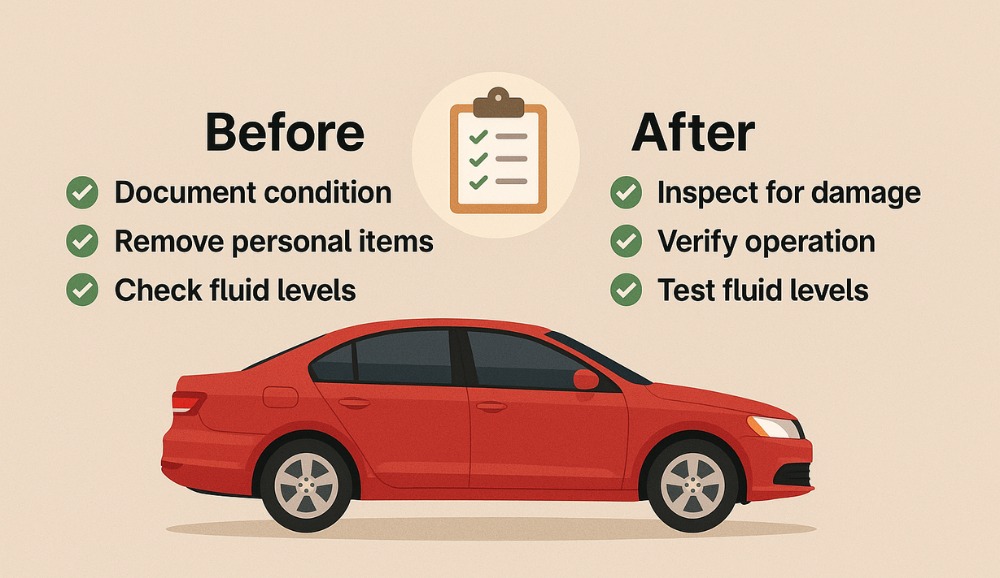Getting your car ready for shipping isn’t just about cleaning it up and saying goodbye. There are a few steps that help protect your car and make the job easier and cheaper for your wallet.
1. Clean the Car (Inside and Out- No Skimping)
It sounds a bit overkill, but washing your car before shipment isn’t just for good looks. A clean car lets you spot and document all the existing dents, scratches, or paint chips before it gets loaded onto the truck. Trust me, it’s much easier to notice a new scratch when your car isn’t covered in dirt and dust.
Don’t forget the inside too. Beyond getting a nice-smelling car back at the delivery point, it’s about safety. Take out all your personal things, electronics, and anything that’s not attached. Items left inside can move around during the transport and damage the interior or go missing.
2. Take Close-Up Photos of Your Car For Proof
This is one of the most important steps to prove what you say is true. Before the carrier arrives, take clear and time-stamped photos of your car from all angles- thanks iPhone for the auto time stamp feature. Get those million close-ups, take different angles of the bumpers, wheels, roof, and under the doors.
If your car has existing damage, take photos of it from multiple angles so you can see if things haven’t got worse. Even a small scratch can get deeper from the move.
These photos become your first line of truth and proof if something goes wrong and you need to make a claim. True story- I once noticed a small but visible scratch after delivery that wasn’t there at pickup. Because I had photos taken just minutes before it was loaded, the shipping company processed the damage claim without a fight.
3. Check for Leaks and Other Issues
Carriers aren’t mechanics, and they’re not responsible for problems unless they’re caused by the shipping itself. Before shipping, do a basic inspection with someone who understands cars-check for oil leaks, transmission fluid and water levels, coolant, and battery charge.
If your car isn’t running properly, tell the shipping company in advance. Cars that won’t start need special loading equipment, and failing to disclose this can result in unexpected fees or a cancelled pickup at the last second.
4. Empty the Gas Tank (to About a Quarter Full)
You don’t need a full tank for a car that’s being shipped—it’s not driving across the country and the extra gas will just add weight. Most companies recommend keeping the fuel level at about a quarter. That’s enough for loading and unloading, but not so much that it adds unnecessary weight to the trailer.
Some carriers will actually charge extra if your tank is more than half full. Check your shipping contract and take a little out if needed. It’s one of those details that’s easy to forget but can save you from last-minute extra fees.
5. Turn Off Alarms and Remove Toll Features
This is a small thing that makes a big difference. Disable any alarm system your car has so it doesn’t go off during transport. Drivers can’t stop mid-haul just to deal with an alarm system going off.
Toll passes removal is a pro tip. These can get scanned accidentally during transit, and you don’t want to be hit with unnecessary charges for tolls your car technically didn’t drive through.
6. Confirm Shipping Details with the Carrier
Before the day of pickup, confirm all the details with your carrier. Double-check the pickup time, delivery address, the name of the driver, and their contact information.
Make sure you have a copy of the Bill of Lading ready and understand what to expect at pickup. If you aren’t meeting the driver rather a point of contact is- be sure this is sorted ahead of time.

